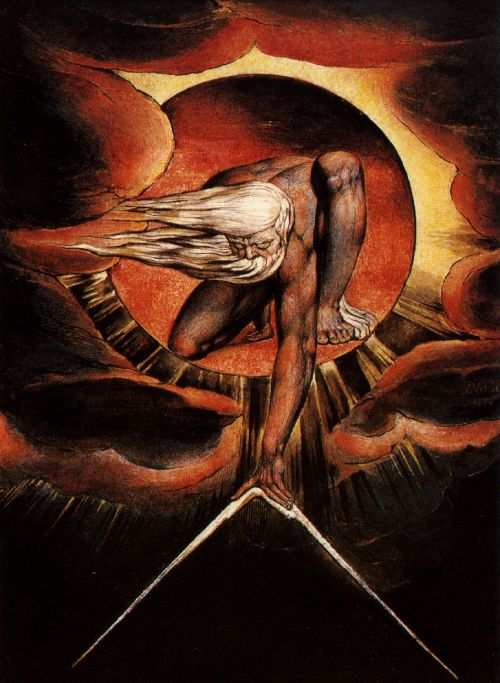
Some people who are impressed by the arguments of the intelligent design movement will finally admit that an intelligent designer may have created the universe. However, they simply refuse to believe that this designer could have been God. Although the question of the Designer’s identity goes beyond Intelligent Design theory, and belongs to the domain of metaphysics and theology, it may be worth considering why their position is fundamentally inconsistent.
To demonstrate this inconsistency, it will be necessary to very briefly explain the terms of the issue from the perspective of metaphysics. (By “metaphysics,” I do not mean to refer to the multitude of modern pseudo-metaphysics; rather, I am referring to the traditional metaphysics of the ancients.) What theology calls “God,” metaphysics refers to as “Being.” And what we call the “universe” or the “cosmos” is simply the “universal existence” or “manifestation” of Being. The universal existence is everything that exists. Incidentally, let us note in passing that the multiverses conjectured by modern science do not transcend the concept of universal existence – i.e. the cosmos or global world as meant in the traditional doctrine – since in any case they would be nothing more than sub-worlds, or worlds within the cosmos. Simple logic dictates that there can be nothing beyond the set of everything that exists.
In metaphysics it is important to conceptually distinguish between the verbs “to be” and “to exist,” although in everyday language this difference doesn’t matter very much. The verb “to exist” (from the Latin “ex-sistere“) etymologically means “to stay outside.” Thus a thing exists when its principle or “sufficient reason” or cause stands outside itself. This is precisely the situation for all the things in the universe. On the other hand, the ontological verb “to be” has a nobler and more powerful meaning than the verb “to exist,” and for this reason it should be applied to the principle or cause of all that exists, i.e. Being, the First Cause.
The auxiliary verb “to be” is, logically and linguistically, the more important verb, as a consequence of its ontological supremacy. Every other verb, as well as any word or logical term whatsoever, presupposes the verb “to be,” and is, as it were, its consequence or effect. From this point of view, Descartes’ rationalistic motto “Cogito ergo sum” should be inverted as “Sum ergo cogito“. Any action (and thinking is an action) presupposes an agent, someone who − before acting − has to be, in the first place. Likewise, the set of all beings, actions, events and things (the manifestation) presupposes Being.
In metaphysics, less definition and specification implies greater power and universality. To define something is to limit it in some way: if I say that a thing is red, I am placing limits on its color; but if I say that a thing is, then that thing can be of any color or none at all, and can possess any property whatsoever. Universal principles are those which are minimally specified. Being has but a single specification: the property of being. It is important to understand that the principle of manifestation (Being) cannot be specified with another property beyond that of being. For instance, to say that “Being is x” or “Being is y” would mean that Being manifests only x or y and cannot be manifested in any other way. To truly be the principle of all manifestation, Being must be defined only by the statement that “Being is.” As a traditional dictum puts it: “God is that by which all things are manifested, but that which can be manifested by nothing.” Since the verb “to be” is so fundamental and contains the minimal degree of specification, there can be only one subject or agent who is. Being is therefore unique. While there are many things that exist, only one Being is.
Another way to understand the uniqueness of Being is to consider a corollary of Leibniz’s principle of “Identity of Indiscernibles.” This principle states that two things that have exactly the same properties cannot be distinct in any way and are in fact the same thing. The corollary is: if two allegedly distinct Beings have exactly the same property of being, then they are not distinct and are in fact a single, unique Being. Regarding the deep relations between “being” and “unity,” Leibniz also rightly remarked: “Who is not truly one being, is not truly one being“. So whatever our point of view, we always arrive at the basic metaphysical statement: God is the Supreme Unity, the Highest One. No matter how many names people may attribute to God, there cannot be two Gods.
For the above reasons, the famous question, “Does God exist?” is expressed improperly and misrepresents the problem. God does not exist; God is. God is the “I am Who I am” of Exodus 3.14, in the sense that “Being is Being.” The use of the incorrect verb “to exist” when referring to God implies a naturalistic conception of Him, whether we are aware of this fact or not. If Nature is all that exists, and God is beyond nature, then God does not exist. Naturalism denies ontology. To mistakenly apply the terms “to exist” and “existence” to God, instead of the correct terms “to be” and “Being,” is a clear sign of implicit naturalism. Unfortunately, this error is also committed by many opponents of naturalism.
Another difference between Being and existence is that the former is fixed and the latter variable. While that which exists is capable of coming into and going out of existence, and may continually change during its lifetime, that which is cannot begin to be or cease to be. In other words, manifestation is the reign of becoming and variation, while Being is the immutable and constant support and carrier on which manifestation appears.
While the principle of a thing is not within that thing, the thing itself is contained within its principle. Effects are virtually contained within their causes. God does not exist within the universe; rather the universe exists within God. In other words, the universe is immanent, while from this point of view, God is transcendent. This asymmetrical relation is the total negation of all pantheistic conceptions of God, which are heterodox. It should be noted here the “within/without” relation is not a spatial one, because space exists only in the cosmos, and cannot be meaningfully applied to God. It would be nonsense to speak of God as either inside or outside physical space, or as somehow limited by space. The spatial relation between container and contained is used symbolically here, to represent causal inclusion.
At this point, some readers might envisage Being simply as an abstraction or a logical concept. However, this would be to seriously misunderstand the simplicity of Being. This is a classic blunder, which results in a total lack of understanding of metaphysics. In reality, Being, as a metaphysical principle, is anything but an abstraction, and Being’s “simplicity” means nothing more than that Being is without parts. In a quite different sense, Being is immensely and unimaginably complex, since it must contain the essences and qualities of all beings and things of the universe. Being’s manifestation is the deployment (in Aristotelian terms, the passage “from potency to act”) of what it potentially contains inside itself.
Some people may ask how the existence of a thing can constitute evidence of Being. In general, anything which exists evidences and manifests He Who Is. Whatever exists, is capable of existence only because its ontological principle is. Nothing could exist without such a preliminary ontological condition. Whoever denies this ontological principle cuts the branch of the tree which he is sitting on, and ultimately denies se ipsum, and therefore his/her entire reality. Some theists put forward the Big Bang as evidence for God. But in reality, the arguments above imply that everything in the universe – even its tiniest part – constitutes evidence of God. When arguing in front of an audience of atheists, to cite the Big Bang as the only evidence for God is to play a defensive game and to assume a weak position. From this perspective, Thomism is perfectly correct in saying that all manifested things have a purpose and meaning and reflect the glory of God. Moreover, there is the traditional dictum that “In every thing there is a sign showing that God is Unity,” which underlines the fact that everything in the cosmos points to His uniqueness. The cosmos is a giant set of symbols of the transcendent reality that lies beyond it.
Since the universe is an intelligent design (and ID theory provides scientific methods and techniques to infer that it is), it follows that its cause, Being, can be symbolically thought as the Great Designer. Everything that can be said about the analogical “interiority” of the universe within its First Cause in no way undermines, but rather confirms, the symbol of the Great Designer. In fact any designer must preemptively conceive his design within himself. In the case of human designers, their designs are eventually physically constructed outside themselves; however this is not an essential feature of design. The designer’s first step is always the conception of the project. Intelligence precedes matter.
The brief excursus above allows us to see specifically why the belief that the Designer is not God is utterly illogical. Let us suppose per absurdum that the designer of the universe is not Being. Question: is this designer immanent or transcendent? If it is immanent, then since immanency means existence in the universe, we would have a designer who is part of the universe, and who designs the universe, and therefore designs himself. The part would design the whole within which it is included. This is a logical fallacy that Thomism refers to in its dictum, “Nihil agit se ipsum“: nothing acts on itself. Since, in supposing the designer to be immanent, we obtain an impossible result, it follows that the designer must be transcendent. Transcendence means non-existence in the universe. However, this Designer, in order to be able to design, must have the property of being (because what does not exist and besides is not can do nothing). As we saw above, what has the property of being has no other property. Hence this designer, having exactly the same properties as Being, is identical to Being (as a consequence of the principle of “identity of indiscernibles”). Hence we arrive at the conclusion that the Designer of the universe is Being (God).
There are two direct consequences of this argument. First, any attempt to make intelligent design compatible with atheism is incoherent. Conversely, ID is compatible with any orthodox theistic doctrine (Thomism included).
